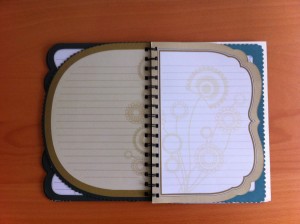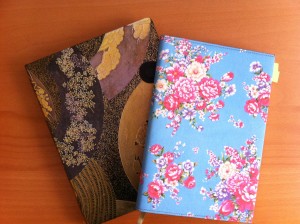At the conflux writers day in April I gave a ‘Writing Skills’ presentation called Building working worlds from weird ideas. I’m not used to public speaking, and the idea of getting up in front of a hall full of people terrified me, so I knew the only way I was going survive would be to talk about the thing I loved most about writing. Thankfully, it worked. I survived (yay!) and I even enjoyed myself (crazy!) and apparently other folks enjoyed it too (madness!).
It occurred to me that my little presentation might make a few interesting blog posts too. So here we go, I hope you enjoy them:
Building Working Worlds from Weird Ideas (1 of 3)
Every writer ever will be asked, “Where do you get your ideas from?” That goes double for speculative fiction writers.
But the more interesting question is how do you turn your ideas into a working world and an engaging story?
As spec fic writers, weird ideas are our currency. Our obsession. They are the seed from which our stories grow, but they are not the stories themselves.
So let’s talk about ideas, where they come from, and how we can develop them into stories.
So where DO you get your ideas?
Let yourself get bored.
“You get ideas from daydreaming. You get ideas from being bored. You get ideas all the time. The only difference between writers and other people is we notice when we’re doing it.” – Neil Gaiman
Ideas need space to grow, but that space can be hard to come by. Mental space, and physical too. There is this pressure, isn’t there, to be busy?
But, you know what, doing nothing is awesome. There is so much joy in boredom.
I remember reading a study somewhere about the connection between boredom and creativity.
“Boredom is nearly always essential to creativity. It isn’t true that creativity is mostly sparked by having a specific problem to be solved. It’s far more likely to arise because the person is bored with the way something has been done a thousand times before and wants to try something new” – the Guardian
That’s not it. I don’t remember where I saw it (probably Facebook. It’s always Facebook) but I clearly remember thinking, “well der.”
I’ve always known this, and I’ve always lived it. When I was a kid I would bounce on the trampoline for hours on end telling myself stories. I used to love long drives with nothing to do except listen to music and, you guessed it, make up stories. (That’s not so easy now I’m the one doing the driving. Don’t freak out, I do pay attention to the road. I promise!)
Nowadays I lean more towards housework as my boring repetitive task of choice. Running’s a pretty good one too. My ideas feed on music, apparently, so both of these involve plugging myself into headphones.
But I still defend my right to do nothing.
I don’t feel guilty about that, and you shouldn’t let anyone make you feel guilty about it! Because it’s all part of the creative process.
My Dad’s an academic, and he likes to say
“Just because an academic is looking out the window doesn’t mean he isn’t working.”
I have well and truly adopted that in my life
“Just because a writer is looking out the window doesn’t mean she isn’t working”
is my mantra, and I’m not afraid to use it.
Tools for catching ideas
Once you’ve given your ideas the space to grow, you need to catch them. They are slippery, squirmy things. Never, ever think “oh I’ll just write that down later” or “that’s such a cool idea, I’ll remember that” because no, you won’t. The idea will laugh at you and leave you alone and depressed, desperately clutching at straws.
My solution is notebooks. A possibly unhealthy obsession with notebooks. Pretty ones. With nice covers and ribbons. And pens. A possibly unhealthy obsession with pens. Pretty ones, in different colours.
There’s a notebook for random ideas.
There are notebooks for short stories, where I develop the initial idea further. Plot, characters, revision notes, that kind of thing.
Each novel has a whole notebook of its own. Research notes are in here, as well as random world building thoughts and questions. Plot points I don’t end up using, intricate magic/tech details no one else will ever know. I even transcribe the revision notes that come back from my beta-readers.
They start out pristine and full of promise and end up scribbled on, torn, dog-eared and riddled with post-it notes. But they work for me.
These are my tools, but they’re not the only way. Personally, I need to write by hand while I’m growing ideas. I need colours and sketches, even doodles while I’m staring out the proverbial window, pondering. But that’s just me. Your notebook could be a file on your computer, linked to the Evernote app on your phone. It don’t matter how you do it, just write the buggers down as soon as they appear.
Not all ideas are created equal
Not that you’ll end up using them all, because not all ideas are created equal. But how can you tell the difference between a good idea, and a bad one? How do you know which ideas to invest all that growing and writing time to?
A good idea has a certain spark to it. It keeps you up at night. It takes over your brain. You start writing it in your head even when you’re desperately trying not to.
Not all ideas start out like that, but that doesn’t make them useless. And even the good ideas that started out so passionately can be a slog to finish writing sometimes. So how do you tell the difference?
This is something I’ve been wrestling with personally — what stories should you start, and when (or even if) should you give up and stop? And I wish I had a more definitive answer. A formula, maybe? If a = y then story? But I don’t, I’ve only got this: listen to your gut.
This is my current experiment — keep listening. From the very first line scribbled in that little green notebook, to the initial sketches, to the first draft and revision. Keep listening. If something doesn’t feel quite right stop, and try to work out why. Because we’re writers, and we have story-guts. And we should listen to them.
To be continued in part 2 – turning ideas into worlds





2 pings
[…] « Building Working Worlds from Weird Ideas (1 of 3) […]
[…] Continued from part 1 – So where DO you get your ideas from? […]